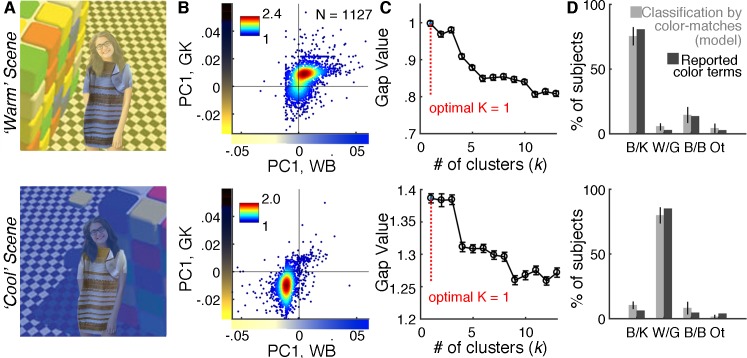Figure 13.
When the dress is embedded in scenes with overt cues to the illumination, it is perceived in a way that can be predicted from the overt cues: W/G when a cool illuminant is cued, B/K when a warm illuminant is cued. (A) The dress was digitally embedded in simulated contexts designed to convey warm illumination (top row) or cool illumination (bottom). Cues to the illuminant are provided by a global color tint applied to the whole scene, including the skin of the model, but not the pixels of the dress. (B) Distribution of subjects' (N = 1,127; 1,074 online, 53 in-lab) color matches. Conventions as in Figure 1. (C) Results of k-means clustering assessments of the matching data from (B). Conventions as in Figure 2. The analysis favored a single-component model (optimal k = 1 cluster) for both the warm and cool scene distributions. (D) Distribution of categorical percepts observed (dark-gray bars) and the distribution predicted from the multinomial classifier (light-gray bars; see Figure 7). Error bars show 95% confidence intervals. Photograph of the dress used with permission; copyright Cecilia Bleasdale.

